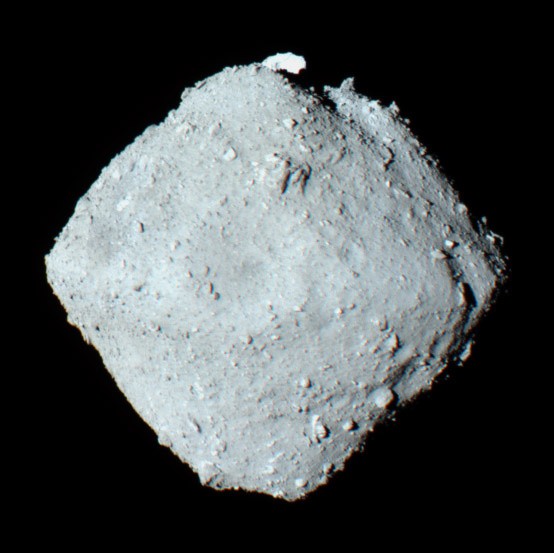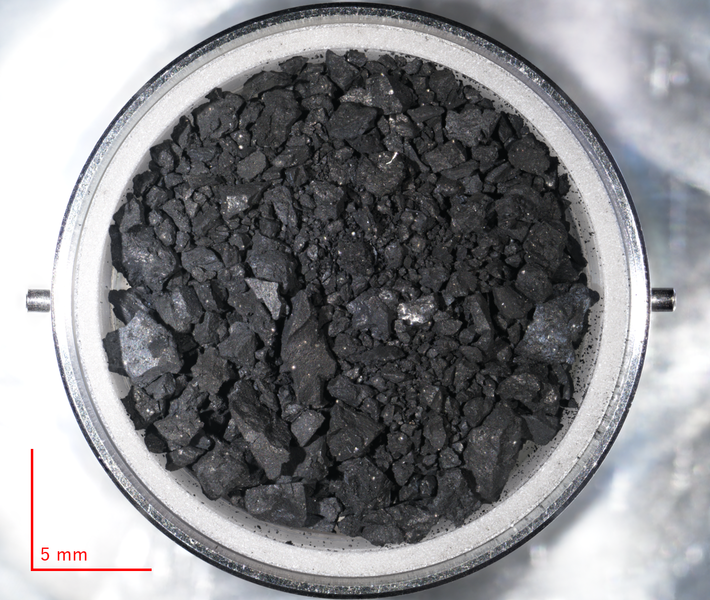Ryugu, a near-Earth asteroid, was created 4 billion years ago in the outer solar system. According to a recent investigation, the asteroid separated from a bigger body and moved in the direction of Earth.

Studying Ryugu
The origins and birthplace of the asteroid Ryugu have been discovered by studying materials taken from it. The results demonstrate that Ryugu's voyage to the inner solar system began hundreds of millions of kilometers distant and billions of years ago, even though it is today categorized as a near-Earth object.
Asteroids like Ryugu are made of unaltered materials left over from the solar system's creation 4.5 billion years ago. They, therefore, hold data on the chemical composition of the early solar system, which may help us comprehend how the universe as a whole has developed.
Ryugu was visited in 2019 by the Hayabusa2 spacecraft of the Japan Aerospace Exploration Agency (JAXA), which is presently within 60,000 miles (97,000 kilometers) of Earth.
2020 saw the collection and return of samples by Hayabusa2, which have since been examined by scientific research teams worldwide. Various organizations utilized numerous investigation approaches to examine the samples' characteristics, including their stone forms, elemental distribution, and mineral makeup.
Looking at Every Detail

By looking at the pieces of each particle, a group from the Argonne National Laboratory of the US Department of Energy utilized an X-ray method called Mössbauer spectroscopy to look for minute changes in the chemistry of Ryugu samples. Their findings were unexpected.
Esen Ercan Alp, a senior physicist in the X-Ray Science division at Argonne National Lab who oversaw the research, stated in a statement that "there is ample evidence that Ryugu began in the outer solar system." The features of asteroids discovered farther from the sun would be different from those found closer to it.
The fact that the Ryugu asteroid's constituent grains are finer than they would be if they formed at the greater temperatures seen closer to the sun is one indication that Ryugu formed in the solar system's outer reaches.
The pieces' porous nature further suggests that they formerly contained ice and water.
Ryugu's parent body must have been at least that far away, probably even outside the orbit of Jupiter, as carbon dioxide and water would have existed in solid form at approximately three to four times the distance from the sun to Earth.
The chunks of Ryugu were carried to Earth in vacuum-sealed containers, so they had never been exposed to oxygen, unlike asteroid fragments that reach Earth's surface after tumbling through our planet's oxygen-rich atmosphere. As a result, the group could evaluate the degree of oxidation that the Ryugu samples had undergone.
Identifying the Celestial Body
According to their investigation, the Ryugu rocks' chemical composition is comparable to meteorites that have impacted the Earth, particularly a rare class of chondrites known as CI chondrites, of which there are only nine known examples on the globe.
Another distinguishing feature of the Ryugu meteorites was discovered by the researchers using spectroscopy: a significant proportion of pyrrhotite. This iron sulfide is missing in the dozen other meteorite samples.
Like the fingerprint of ice, a significant quantity of pyrrhotite constrains the location of Ryugu's parent asteroid at the time of the collision, which is thought to have caused Ryugu to develop. The outcomes from Argonne set out billions of years of Ryugu's history along with findings from hundreds of other experts at 11 universities.
For more Space news, don't forget to follow Nature World News!
© 2025 NatureWorldNews.com All rights reserved. Do not reproduce without permission.





